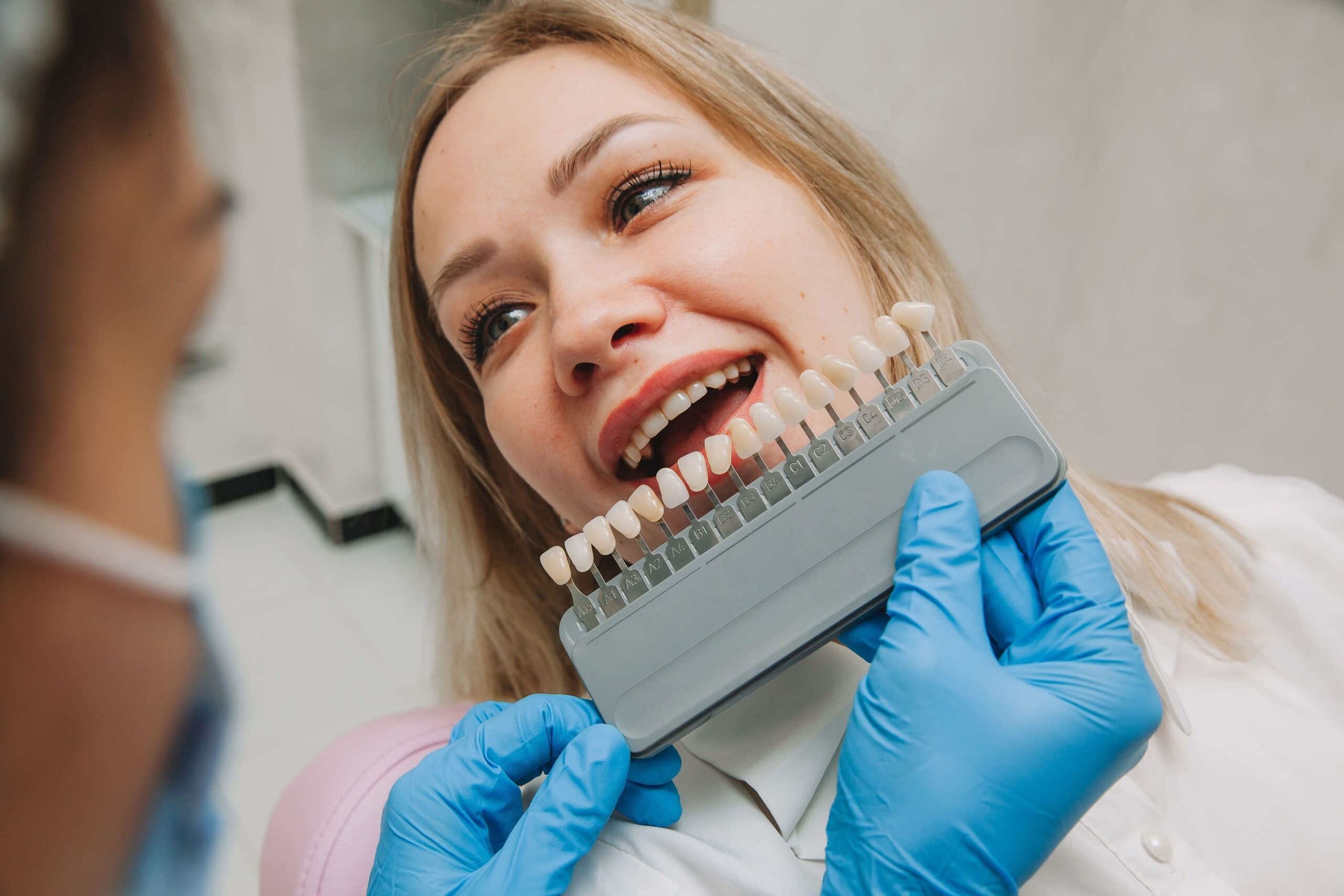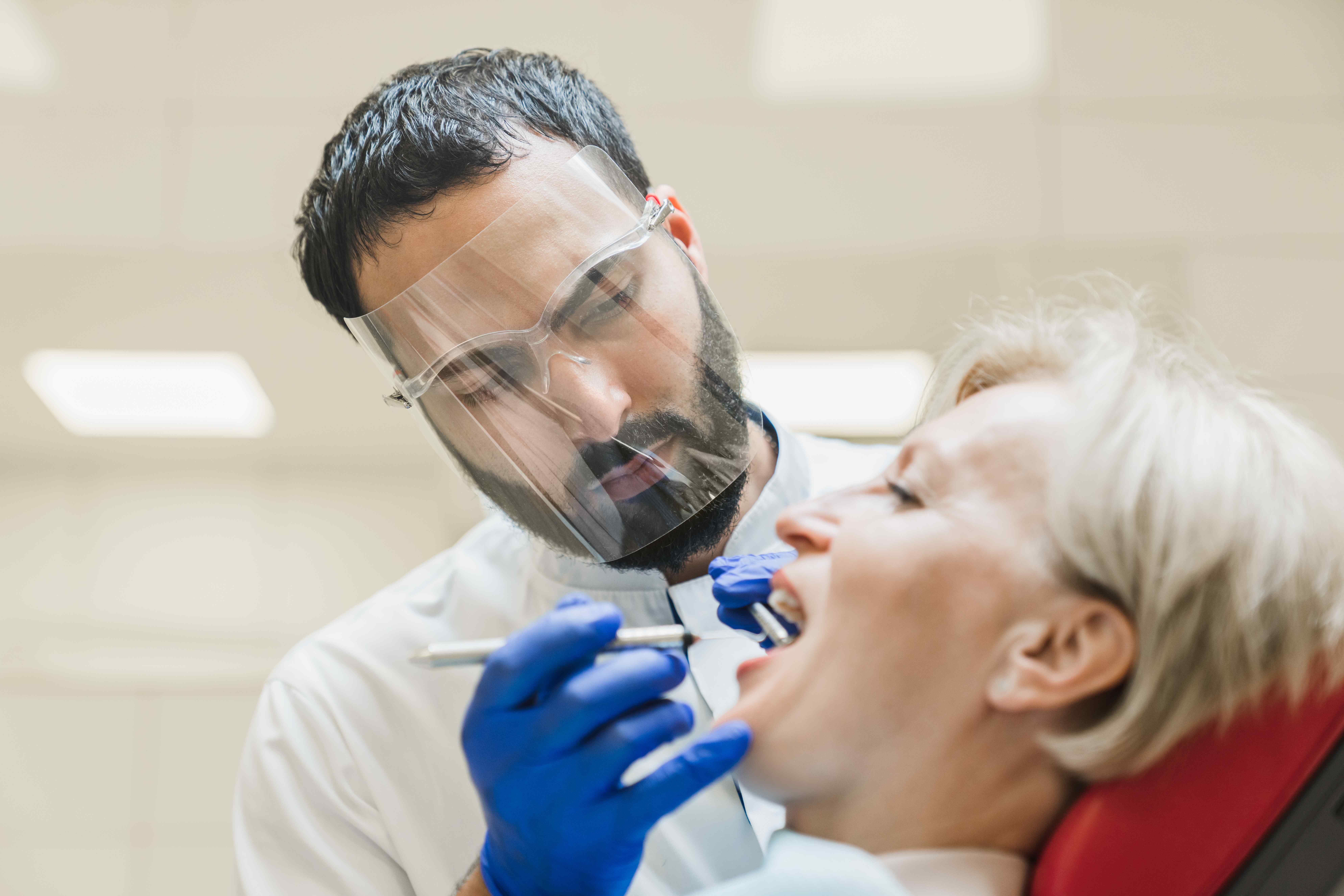Tooth decay is one of the most common chronic health issues worldwide, affecting individuals of…

Beautifying Your Smile: Understanding Different Teeth Whitening Treatment Options
Who doesn’t crave a bright and healthy smile? Teeth whitening has become increasingly popular for those looking to boost their confidence and enhance their appearance. Whether you’re preparing for a special occasion or simply aiming to improve your daily look, teeth whitening can help you achieve that dazzling smile.
There are several teeth whitening treatments available, each catering to different needs and preferences. At-home options include whitening kits, strips, trays, and toothpastes that allow you to brighten your smile from the comfort of your home. Professional procedures are performed by dentists using advanced technology for quicker and more dramatic results.
It’s essential to consult your dentist at the Center for Restorative, Cosmetic, and Implant Dentistry (CRCID) before starting any teeth whitening regimen. A dental professional can provide personalized advice based on your individual dental health, ensuring you choose the most suitable treatment approach. This is crucial for achieving the desired level of whiteness while maintaining overall oral health.
At-Home Teeth Whitening Options
At-home teeth whitening has become popular because it’s convenient and affordable. These treatments usually use bleaching agents with peroxide to get rid of stains and make teeth lighter.
Teeth whitening strips are thin, flexible plastic strips coated with a peroxide-based gel. Users apply the strips directly to their teeth for a specified period, usually around 30 minutes daily for a week or two. These strips are easy to use and can fit into a busy schedule without much hassle, and are cheaper than professional treatments. However, they can yield uneven results as strips may not cover all tooth surfaces, and some users experience temporary tooth sensitivity or gum irritation.
Teeth whitening trays involve filling custom or pre-molded trays with a bleaching gel and wearing them over the teeth. These trays are typically worn for longer periods, sometimes overnight. Trays offer a more uniform coverage compared to whitening strips, and often contain a higher concentration of bleaching agents for more noticeable results. However, they do take longer to work and can be uncomfortable to wear due to their bulkiness.
Whitening toothpaste is designed for daily use, containing mild abrasives and low concentrations of peroxide. It’s ideal for maintaining whiteness rather than achieving dramatic changes. It can be easily incorporated into your daily routine, and since it contains milder agents, it is less likely to cause sensitivity. Whitening toothpaste is not as potent as other methods, and requires consistent use over an extended period to see any visible difference.
Professional Teeth Whitening Procedures
Professional teeth whitening at the dentist’s office is a popular choice for those seeking faster and more dramatic results. The process typically involves the application of high-concentration peroxide-based bleaching agents, often activated by advanced technology such as laser or LED light to accelerate the whitening process. Here’s how it works:
- Initial Consultation: A thorough dental examination to assess the health of your teeth and gums.
- Preparation: Protection of gums and other soft tissues using a special barrier or gel.
- Application: Application of a powerful bleaching agent directly to the teeth.
- Activation: Use of laser or LED light to activate the bleaching agent, enhancing its effectiveness.
- Rinse and Repeat: Rinsing off the bleaching agent and reapplying if necessary, depending on desired results.
Professional whitening treatments have some key advantages. Treatments are tailored to individual needs, ensuring optimal results based on personal tooth structure and discoloration levels. Dental professionals monitor the entire process, reducing risks and addressing any immediate concerns. And advanced technology and higher concentration agents yield noticeable results in a single visit compared to weeks with at-home options.
However, despite its benefits, professional teeth whitening is not without its potential side effects. Higher concentration bleaching agents can lead to sensitivity during or after treatment. This usually subsides within a few days but can be managed with desensitizing toothpaste if needed. In addition, accidental exposure of gums to bleaching agents may cause temporary irritation or discomfort.
It’s essential to have these treatments performed under professional supervision to minimize risks and ensure safety. Professional teeth whitening offers a reliable solution for achieving a bright smile, combining advanced technology, personalized care, and expert oversight for an optimal outcome.
Understanding the Causes of Tooth Discoloration
Teeth discoloration can be a bummer, but understanding what causes it can help you take preventive steps. Discolored teeth result from various internal and external factors:
- Aging: As we age, the enamel on our teeth thins out, revealing the yellowish dentin beneath.
- Genetics: Some people naturally have brighter or thicker enamel than others, making them less prone to discoloration.
- Poor Dental Hygiene: Inadequate brushing and flossing can lead to plaque buildup and staining. Regular dental cleanings are crucial to maintaining a bright smile.
- Dietary Choices: Foods and beverages like coffee, tea, red wine, and berries contain chromogens that stick to your enamel and cause stains.
- Smoking or Tobacco Use: Nicotine and tar from tobacco easily absorb into the porous surfaces of teeth, leading to stubborn yellow or brown stains.
Understanding these causes helps in choosing the right whitening treatment and adopting habits that will keep your smile sparkling.
Determining Candidacy for Teeth Whitening
Before you start your teeth whitening journey, it’s important to find out if you are a good candidate for teeth whitening. This decision-making process heavily relies on a comprehensive dental evaluation with your dentist at CRCID. By consulting with a dentist, you can make sure that the chosen treatment is suitable for your dental health and goals.
There are several factors to consider when determining if teeth whitening is right for you.
- Dental Restorations: If you have visible dental restorations such as fillings, crowns, or veneers, whitening treatments might not give you consistent results. These materials don’t react to bleaching agents in the same way natural teeth do, which could lead to uneven color.
- Severity of Discoloration: The amount and type of discoloration also affect whether or not you’re a good candidate for teeth whitening. Surface stains from food and drinks tend to respond better to whitening procedures compared to deeper stains caused by things like medication or injury.
For individuals who may not be ideal candidates for traditional teeth whitening methods, alternative cosmetic options can be considered including porcelain veneers, dental bonding, and microabraision.
Getting personalized advice from your CRCID dentist will guide you through these options effectively, allowing you to achieve the best results for your smile.
The Science Behind the Teeth Whitening Process
Understanding the science behind teeth whitening can make the whole process less mysterious and more interesting. Most whitening treatments use peroxide-based bleaching agents, usually hydrogen peroxide or carbamide peroxide.
Teeth discoloration happens because of chromophores, which are molecules that absorb certain types of light, causing stains. When peroxide-based agents touch your teeth, they release oxygen molecules. These oxygen molecules go through the enamel and dentin layers of your tooth. They react with the chromophores in a chemical process that breaks down these stain-causing molecules, effectively making your teeth look lighter.
While peroxide-based treatments can give you great results, it’s important to have realistic expectations. The effects of teeth whitening don’t last forever. Enamel is porous, so it can slowly absorb stains from food, drinks, and other habits over time. And the results are different for everyone. Things like your natural tooth color, how much discoloration you have, and even your genes can affect how well your teeth respond to whitening.
Understanding these scientific principles helps you know what to expect and reminds you how important it is to take care of your teeth to keep them looking nice and white.
The Role of Ongoing Dental Care in Sustaining Long-lasting Teeth Whitening Results
So, you’ve achieved that dazzling smile with teeth whitening treatments, but what’s next? Maintaining those pearly whites requires a solid dental care routine and some lifestyle tweaks.
Regular brushing and flossing are key to keeping your teeth white. Aim to brush at least twice a day using a fluoride toothpaste, and don’t skip flossing. This helps remove plaque and prevent new stains from forming. Schedule regular check-ups with your dentist at CRCID. Professional cleanings can remove surface stains that your daily routine might miss, keeping your smile bright and healthy.
Here are some practical tips to help maintain your teeth whitening results:
Limit staining foods and beverages: Cut back on coffee, tea, red wine, and dark-colored berries. When you do indulge, consider using a straw to minimize contact with your teeth.
Quit smoking: Tobacco is notorious for staining teeth. Kicking the habit not only benefits your oral health but also helps maintain your whitening results.
Rinse after eating: Swishing water around in your mouth after meals can help wash away food particles and reduce staining.
Use a whitening toothpaste: Incorporate a whitening toothpaste into your daily routine for ongoing maintenance.
By sticking to these habits, you can enjoy long-lasting results from your teeth whitening treatments and maintain overall oral health.
Conclusion
Exploring teeth whitening options can transform your smile, boosting both confidence and appearance. Cosmetic benefits are undeniable, but it’s equally important to consider the oral health implications. Consulting with the dental team at CRCID ensures you receive personalized advice tailored to your unique dental needs.
Adopting a comprehensive approach to dental care is crucial for achieving a truly radiant and confident smile. This involves:
- Regular dental check-ups
- Consistent oral hygiene practices
- Mindful consumption of staining foods and beverages
Embrace these habits to enjoy long-lasting results from any teeth whitening treatment. Keep shining bright with a healthy, beautiful smile!
Our caring team at the Center for Restorative, Cosmetic, and Implant Dentistry is here to answer any questions about teeth whitening options for patients in the Chesapeake and Virginia Beach, VA areas. Contact us today to make an appointment for a consultation. Your dental health and bright smile are our priorities!


